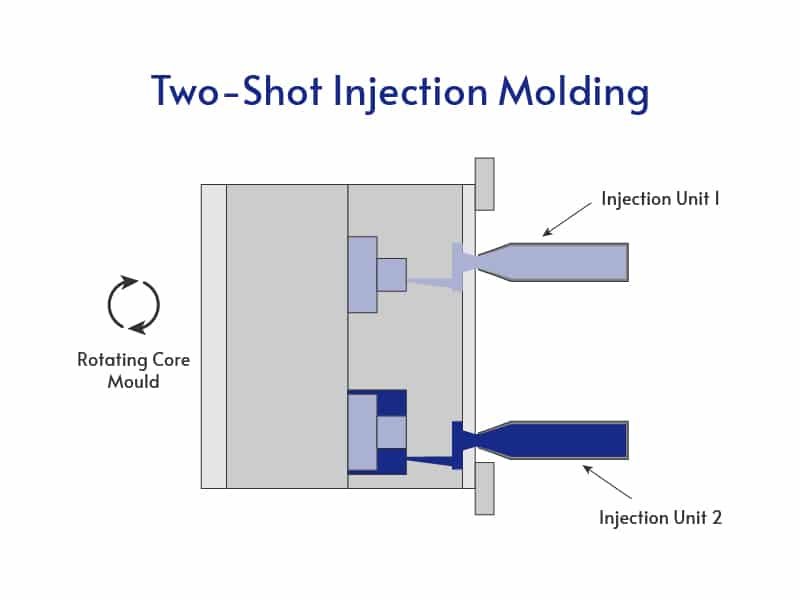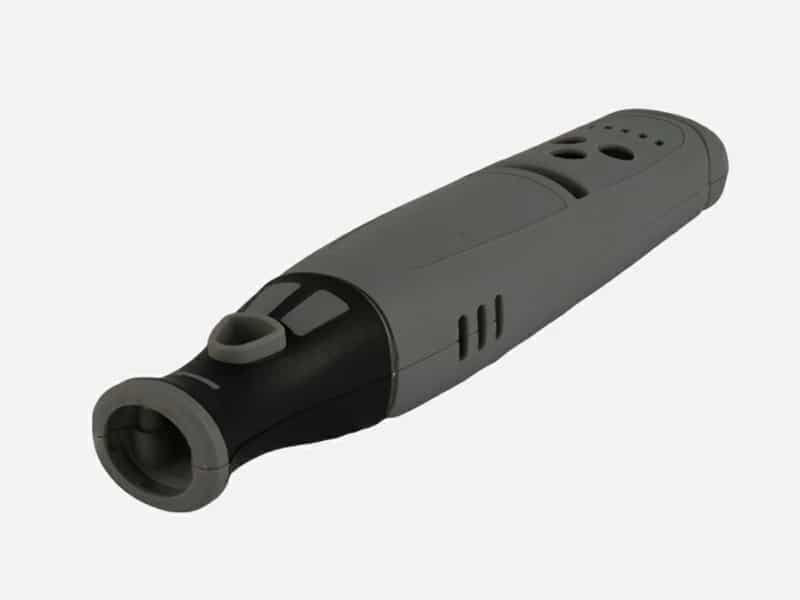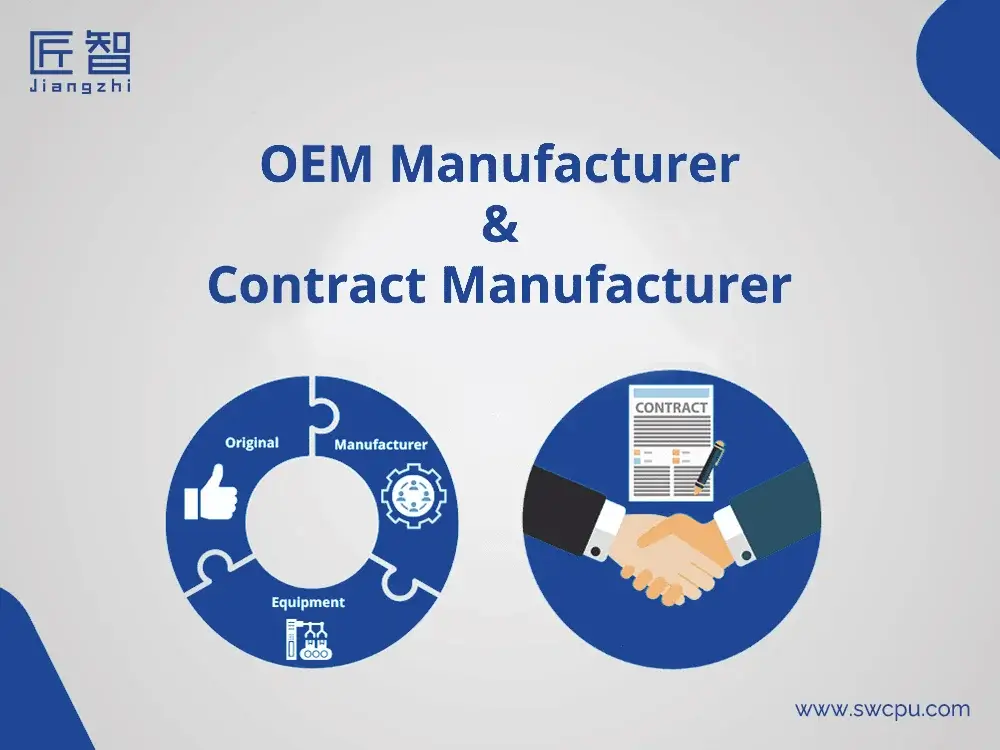CNC machining and injection molding appear frequently in modern manufacturing. These processes handle precise components but follow different paths. CNC machining vs injection molding discussions highlight variations in setup, output, and application. This article provides a detailed comparison of cnc machining vs injection molding, highlights key differences, and offers guidance on when to choose each method.
What is Injection Molding?
Injection molding is a manufacturing process where plastic pellets are melted and injected into a custom mold to form a part. The process begins with designing a mold, typically made of steel or aluminum. The plastic pellets are fed into a heated barrel, melted, and forced through a nozzle into the mold cavity. Pressure keeps the material in place as it cools, and ejector pins remove the solidified part. Secondary operations may include trimming gates or adding inserts.
- Key Advantages: The main benefits of injection molding include high dimensional accuracy, excellent surface finish, and strong mechanical properties. Once the mold is made, production is fast and consistent, making it cost-effective for large-scale manufacturing.
- Limitations: Despite its advantages, injection molding has drawbacks. Mold fabrication requires significant time and investment, and design changes after mold completion are difficult and costly. For small-batch production or highly customized components, other manufacturing methods may be more practical.
Materials
Plastic injection molding supports a wide range of thermoplastics, allowing manufacturers to balance strength, flexibility, and appearance:
- Acrylonitrile Butadiene Styrene(ABS): Offers excellent impact resistance, dimensional stability, and surface finish.
- Polypropylene (PP): Lightweight, chemically resistant, and ideal for cost-effective mass production.
- Polycarbonate (PC): Known for clarity and toughness, suitable for transparent or structural components.
- Nylon (PA): Provides high mechanical strength and wear resistance, often used for functional parts.
Applications
Injection molding is used across diverse industries for both functional and aesthetic components:
• Automotive: Dashboards, housings, interior trims, and under-the-hood parts.
• Medical Devices: Precision components requiring biocompatibility and sterilization compatibility.
• Electronics: Enclosures, connectors, and heat-resistant casings.
• Consumer Goods: Everyday products such as containers, toys, and household items that demand uniformity and scalability.
What is CNC Machining?
CNC machining is a subtractive manufacturing process where material is removed from a solid block using computer-controlled cutting tools to create a part. The workflow begins with CAD models converted to G-code instructions. Workpieces secured on a machine bed. Tools such as mills, lathes, or drills remove material in passes. Multi-axis machines handle complex shapes.
- Key Advantages: CNC machining is valued for its high precision, tight tolerances, and ability to produce complex geometries without the need for specialized tooling. Unlike injection molding, CNC machining does not require molds, which makes it suitable for small-batch production and design iterations.
- Limitations: Despite its advantages, CNC machining has some drawbacks. Production speed is generally slower compared to injection molding, particularly for large quantities. Material utilization can be lower due to waste generated by cutting, and per-part costs tend to be higher when producing large volumes.
Materials
CNC machining works with a broad selection of materials, offering exceptional versatility for both metal and plastic parts.
- Metals: Aluminum, stainless steel, brass, titanium, and other alloys known for strength and durability.
- Plastics: ABS, POM (Delrin), nylon, polycarbonate, and acrylic for lightweight and corrosion-resistant components.
- Composites: Carbon fiber–reinforced and glass-filled materials for high-performance applications.
Applications
CNC machining is widely used across industries that require precision, customization, and reliability.
- Aerospace: Engine components, structural brackets, and prototype assemblies.
- Automotive: Custom fixtures, precision housings, and metal replacement parts.
- Medical Devices: Surgical tools, implants, and precision enclosures.
- Electronics: Heat sinks, casings, and intricate connectors.
- Consumer Products: Small-batch prototypes and customized parts requiring tight tolerances.
Key Differences Between Injection Molding and CNC Machining
While both injection molding vs machining and CNC vs injection molding can produce functional components, the two processes differ significantly in several areas:
Molds and Tooling
Injection molding requires a custom mold for each part, which involves significant upfront cost and time for fabrication. CNC machining does not require molds; parts are produced directly from raw material blocks.
Production Cycle
Injection molding has extended upfront timelines for mold fabrication, but achieves fast production once running. CNC machining delivers parts in days from design approval, though each unit takes time on the machine.
Cost Structure
Injection molding features high fixed costs amortized over large runs. CNC machining maintains low setup fees but consistent labor and machine time, keeping costs steady regardless of quantity.
Materials and Mechanical Properties
Injection molding works with flowable plastics, producing parts with uniform density and isotropic strength. CNC machining supports a wider range, including hard-to-mold materials, yielding parts with properties matching the raw stock.
Design Flexibility and Complexity
CNC machining offers greater design flexibility because it does not depend on molds. Complex geometries, intricate details, and internal features are easier to achieve with CNC. Injection molding is limited by mold design constraints, such as draft angles and undercuts.
Surface Treatment and Precision
Injection molding provides smooth finishes from the mold texture, with precision suitable for most consumer parts. CNC machining achieves finer details and tighter tolerances through multiple passes and tool selections.
Consistency and Scalability
Injection molding ensures identical parts in high volumes with automated lines. CNC machining offers repeatability but scales through additional machines or shifts, better suited for lower quantities.
How to Choose Between CNC Machining and Injection Molding?
Selecting the right manufacturing method requires careful evaluation of project requirements, production volume, and material considerations.
Choosing CNC Machining
CNC machining is ideal when:
Small-batch production or prototypes are required
Parts require high precision and tight tolerances
Complex geometries or intricate features are present
Quick design iteration or modification is expected
A wide variety of materials, including metals and composites, is needed
Injection molding is suitable when:
- Large-volume production is required
- Consistency and repeatability are critical
- Parts are made primarily of thermoplastics
- High production efficiency and low per-unit cost are desired
- Post-production tolerances and surface finishes must be consistent across all parts
Combining CNC Machining and Injection Molding
Combine CNC machining and injection molding for optimal results. CNC machining can be used for prototyping and design validation, while injection molding is employed for large-scale manufacturing once the design is finalized. This combination minimizes risk, reduces development time, and ensures cost-effective production.
Conclusion
Whether you need precise prototypes or efficient mass production, Jiangzhi provides tailored CNC machining and injection molding solutions to match your goals. Our team ensures every part meets your standards in quality and performance






